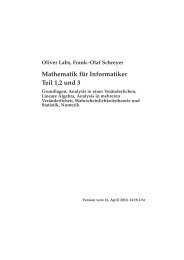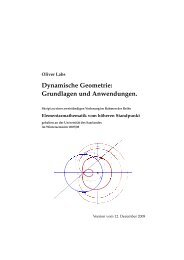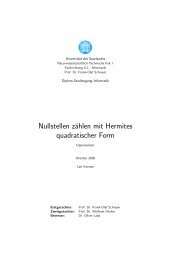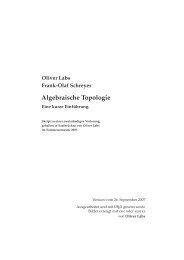Automated Generation of Kempe Linkages for ... - Alexander Kobel
Automated Generation of Kempe Linkages for ... - Alexander Kobel
Automated Generation of Kempe Linkages for ... - Alexander Kobel
Create successful ePaper yourself
Turn your PDF publications into a flip-book with our unique Google optimized e-Paper software.
4.4 Presentation <strong>of</strong> Our Simulation <strong>of</strong> <strong>Kempe</strong> <strong>Linkages</strong><br />
Figure 4.8: The graphical user interface <strong>of</strong> our implementation<br />
For a deeper insight to the construction, we log all steps done throughout the construction<br />
in the CindyScript instruction <strong>for</strong>mat. Thus the user can redo the operations<br />
in a stand-alone instance <strong>of</strong> Cinderella and examine the simulation in every detail,<br />
although without our interface to Xalci. For short requests, the user can also use a<br />
CindyScript command line inside our application.<br />
4.4.2 Animations<br />
Sadly, a printout cannot express the dynamic nature <strong>of</strong> an animation very well. At least<br />
we can give some screenshots throughout a simulation (figures 4.10 and 4.11). We<br />
trace the motion <strong>of</strong> S while P moves along the curve C = V(y 2 + x 3 − x 2 ); our setup<br />
uses m = n = 1. In the trigonometric <strong>for</strong>m <strong>of</strong> the polynomial, no <strong>of</strong>fset by constant<br />
terms occurs, so the line S stays on is the y-axis.<br />
When P enters the viewport into the second quadrant, S comes along from above.<br />
Through the self-intersection <strong>of</strong> the curve in the origin, S continuously passes (0, 1),<br />
to oscillate around the origin while P describes the loop <strong>of</strong> C. When P leaves the<br />
37






